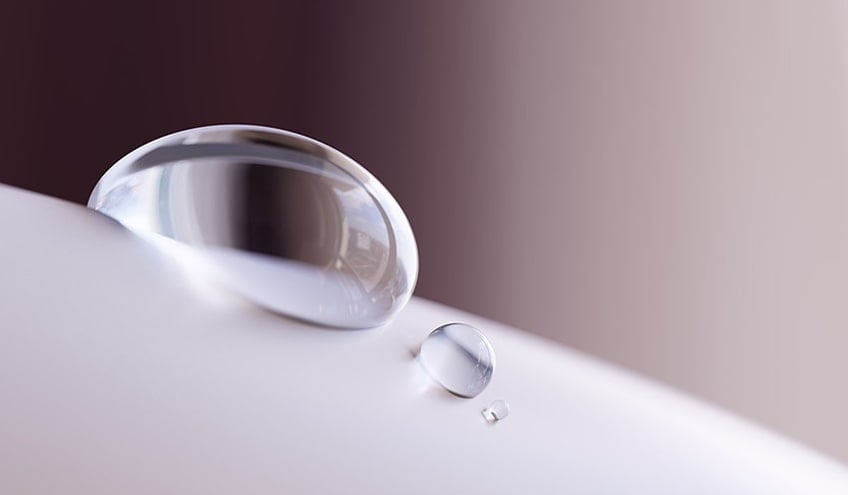Key Takeaways:
-
Surface tension describes the attractive forces between molecules at the surface of a liquid, while surface energy describes the same phenomenon at the surface of a solid.
-
Both are expressions of intermolecular attraction, which determines whether two materials will adhere successfully.
-
Surface tension and surface energy can be measured, providing quantitative insight into process control and optimization.
-
Water contact angle (WCA) is the most direct and reliable way to measure surface energy and evaluate surface readiness for bonding or coating.
-
Understanding these properties allows manufacturers to control and verify adhesion processes, reducing variability and failure risk.
-
Technologies like BConnect enable manufacturers to measure and manage surface energy directly on the production line, ensuring consistent, high-quality bonds.
Introduction
Adhesives have become an essential part of modern manufacturing, used to assemble everything from microchips and consumer electronics to aircraft and automobiles. The science behind these materials, however, traces back centuries, to when ink was first applied to paper and paint first coated metal.
At the core of every successful adhesive bond lies a deep understanding of two fundamental material properties: surface tension and surface energy. These concepts govern how liquids and solids interact, determining whether coatings spread evenly, adhesives cure properly, or bonds hold under stress.
This article explains the relationship between surface tension and surface energy, how they are measured, and why they are so vital to achieving predictable adhesion in manufacturing.
Understanding the Molecular Forces Behind Adhesion
All matter is made up of molecules that attract one another with varying strength. This intermolecular attraction explains why water forms droplets instead of dissipating into the air, and why ice cubes hold their shape in a glass.
When this attraction occurs between molecules at the surface of a liquid, we call it surface tension. When it occurs between molecules at the surface of a solid, we call it surface energy. Though these terms are used in different contexts, they represent the same physical phenomenon: cohesive molecular forces that resist separation.
These forces are measurable, and understanding them allows manufacturers to predict and control how substances will behave when they meet. A material with high surface energy tends to bond strongly with coatings and adhesives, while one with low surface energy tends to repel them, causing wetting or adhesion failure.
Why Surface Tension and Surface Energy Matter in Manufacturing
Consider printing ink on paper. When ink molecules are strongly attracted to each other (high surface tension), they resist spreading. The ink will bead up rather than forming a smooth, even layer. Conversely, ink with lower surface tension spreads easily across the substrate because the attractive forces from the surface pull the liquid outward.
This interaction, where liquid and solid meet, is where surface tension and surface energy converge to determine adhesion success.
In manufacturing, understanding this relationship can mean the difference between reliable, predictable bonding and costly rework or failure. Whether applying adhesives, paints, or sealants, controlling these surface forces ensures consistency and performance.
Rethink your adhesion manufacturing processes with Surface Intelligence.
What is Surface Tension?
Surface tension is defined as the attractive force between molecules at the surface of a liquid that acts to minimize surface area. It’s what allows water droplets to maintain their spherical shape, and what resists the stretching or breaking of a liquid film.
Unlike gravitational forces, which depend on mass, surface tension arises from electrical charge distribution in molecules. Molecules at the surface experience an imbalance, with fewer neighboring molecules to bond with, so they are pulled inward by cohesive forces within the liquid.
The result is a “skin” effect at the liquid’s surface. To separate this surface or expand it requires energy, which is quantified as surface tension.
Surface tension (γ) can be defined as:

- F is the force required to pull apart the liquid surface, and
- L is the length of the line being pulled apart..
Methods of Measurement
There are several practical ways to measure surface tension in a laboratory or manufacturing setting:- du Noüy Ring Method: Measures the force required to detach a ring from a liquid’s surface.
- Maximum Bubble Pressure Method: Measures the pressure needed to form and release a bubble at the end of a submerged tube or needle.
Surface Tension vs. Viscosity
Surface tension and viscosity are often confused but represent distinct physical properties.
- Surface tension measures the force required to increase a liquid's surface area
- Viscosity measures a liquid's resistance to flow
Water, for example, has high surface tension but low viscosity, while mineral oil has low surface tension but high viscosity.
Factors Affecting Surface Tension
Anything that changes the attraction between molecules can change a liquid’s surface tension.
For example, water molecules are highly polar. The positive and negative charges on hydrogen and oxygen atoms attract opposite charges on neighboring molecules. This polarity gives water a relatively high surface tension and a high boiling point for such a small molecule.

In manufacturing, we can manipulate these intermolecular forces using surface treatments such as flame, plasma, or corona discharge. These treatments increase the surface energy of materials like polymers, making them more receptive to inks, adhesives, and coatings.
Everyday Example: The "Tears of Wine"
A classic demonstration of surface tension in action is the “tears” or “fingers” that form on the sides of a glass of wine after it’s swirled.
When wine (a mixture of ethanol and water) is exposed to air, the ethanol evaporates faster than water, increasing the surface tension of the remaining liquid. This tension difference creates a flow known as the Marangoni effect, causing liquid to climb the sides of the glass and form droplets.
While visually striking, this effect says nothing about wine quality, it’s purely a function of surface tension gradients.
What is the Difference Between Surface Tension and Surface Energy?
As discussed earlier, surface tension and surface energy describe the same underlying molecular forces—cohesive attractions between molecules at a material’s boundary. The difference lies in context:
- Surface tension applies to liquids, describing how their molecules attract one another at the surface
- Surface energy applies to solids, describing the equivalent attractive forces between molecules on a solid surface
Both are measurable, both influence adhesion, and both are essential for process verification in manufacturing environments where bonding, coating, or sealing are critical to performance.
Measuring Surface Energy with Water Contact Angle
Unlike liquids, solids do not flow, so their surface energy cannot be measured directly. Instead, it’s determined indirectly by observing how a liquid behaves when it comes into contact with the surface—a property known as wetting behavior.
The most reliable and widely used method for this is the water contact angle (WCA) measurement. When a droplet of water is placed on a solid surface, the angle formed at the point of contact provides a direct indication of how clean and bondable that surface is:
- A low contact angle (the droplet spreads out) means the surface has high surface energy—it’s clean, active, and ready to bond or coat.
- A high contact angle (the droplet beads up) means the surface has low surface energy, often due to contamination or insufficient surface treatment.
Because water is a simple, well-characterized liquid, measuring its contact angle offers a repeatable, quantitative way to evaluate surface readiness. This method translates microscopic molecular interactions into actionable data engineers can use for process verification and quality control.
Modern platforms like BConnect automate contact angle measurement and analysis, allowing teams to assess surface energy in seconds—right on the production line. This real-time insight ensures every surface meets bonding, coating, or sealing requirements before assembly begins, making adhesion predictable and verifiable.
Why Surface Energy Control is Critical
In practical terms, surface energy governs whether a process succeeds or fails. For example:
- If a substrate's surface energy is too low, adhesives may fail to wet out, leading to weak or inconsistent bongs.
- If it's too high, contaminants or residues can interfere with adhesion or coating uniformity.
Understanding and controlling surface energy ensures predictable bonding strength, whether in microelectronics, medical device assembly, or automotive coating.
Manufacturers can improve outcomes by measuring surface energy in-line and using that data to verify process readiness before applying adhesives or coatings.
From Measurement to Process Control
Surface energy is not static. It changes with time, contamination, and surface treatment. In many facilities, this variability leads to unexplained adhesion failures or coating defects that can’t be traced by visual inspection alone.

That’s why leading manufacturers are turning to real-time Surface Intelligence solutions like BConnect.
BConnect is Brighton Science’s connected platform that enables manufacturers to:
- Measure surface energy directly on the production line, ensuring that surfaces are within specification before bonding or coating.
- Quantify and visualize surface readiness data, turning what was once an invisible variable into measurable process insight.
- Detect contamination or variate that could compromise bond quality.
- Integrate surface data into digital process control systems, enabling verification and traceability for every part or product.
Putting It All Together
Both surface tension and surface energy describe the forces that control how materials interact at their boundaries. By understanding and quantifying these forces, manufacturers gain the ability to:
- Predict adhesive and coating performance
- Verify surface preparation and activation processes
- Reduce scrap and rework caused by adhesion failures
- Implement data-driven, predictive quality control
Modern tools like BConnect make these insights accessible in real time, turning the once-unseen science of adhesion into measurable, actionable intelligence.
Key Takeaways for Manufacturers
Surface tension and surface energy are more than abstract physics concepts. They are measurable, controllable parameters that directly impact manufacturing quality and efficiency. When surfaces are properly characterized and monitored, adhesion can be predictable, repeatable, and verifiable.
If your team is focused on improving adhesion reliability, start by making your surfaces measurable. Explore how BConnect can bring surface energy control directly to your production floor.
Struggling with adhesion failures? Been there. Solved that.
Frequently Asked Questions
Q: Are surface tension and surface energy the same thing?
They describe the same type of molecular attraction but apply to different materials: surface tension for liquids, surface energy for solids.
Q: Why do manufacturers measure surface energy?
Because surface energy predicts how well adhesives, coatings, or inks will bond to a substrate. Measuring it allows process control and prevents adhesion failures.
Q: How is surface energy measured in manufacturing?
Typically by water contact angle measurement, which consists of observing how a liquid droplet behaves on a surface. Platforms like BConnect make this process fast, quantifiable, non-destructive, and production-ready.
Q: What factors influence surface tension and energy?
Molecular structure, polarity, contamination, and surface treatments such as plasma or flame treatment all affect these properties.
Q: Can surface energy be adjusted?
Yes. Surface treatments can increase or decrease energy levels to improve wettability and adhesion consistency.



